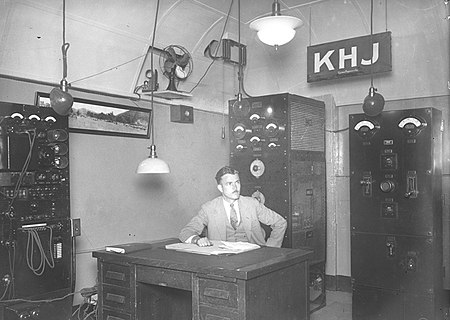KHJ (AM)

KHJ (930 AM) is a commercial radio station that is licensed to Los Angeles, California. Owned and operated by Relevant Radio, Inc., the station broadcasts Roman Catholic religious programming as an affiliate of the Relevant Radio network. KHJ broadcasts at 5,000 watts, with a non-directional signal by day but using a directional antenna at night to protect other stations on 930 AM. KHJ's transmitter is triplexed to three of the six towers of KBLA (1580 AM), near the intersection of Sunset Boulevard and Alvarado Street in the Echo Park neighborhood of Los Angeles. Radio station KYPA (1230 AM) also uses two of KBLA's towers for its signal. KHJ's former towers at the intersection of Venice Boulevard and Fairfax Avenue in Mid-City were removed in February 2013. KHJ was a top 40 station from 1965 to 1980. The station switched to a country music radio format in 1980 and back to pop music in 1983. In 1986, KHJ changed its call letters to KRTH, adopting an oldies format as a sister station to KRTH-FM (101.1 FM). Three years later, the station was sold to Liberman Broadcasting who aired Spanish-language formats from 1990 to 2014, using the call letters KKHJ until 2000, when it regained its original calls.
Excerpt from the Wikipedia article KHJ (AM) (License: CC BY-SA 3.0, Authors, Images).KHJ (AM)
Effie Street, Los Angeles Echo Park
Geographical coordinates (GPS) Address Phone number Website Nearby Places Show on map
Geographical coordinates (GPS)
| Latitude | Longitude |
|---|---|
| N 34.085555555556 ° | E -118.25666666667 ° |
Address
Gateways Hospital
Effie Street 1891
90026 Los Angeles, Echo Park
California, United States
Open on Google Maps



